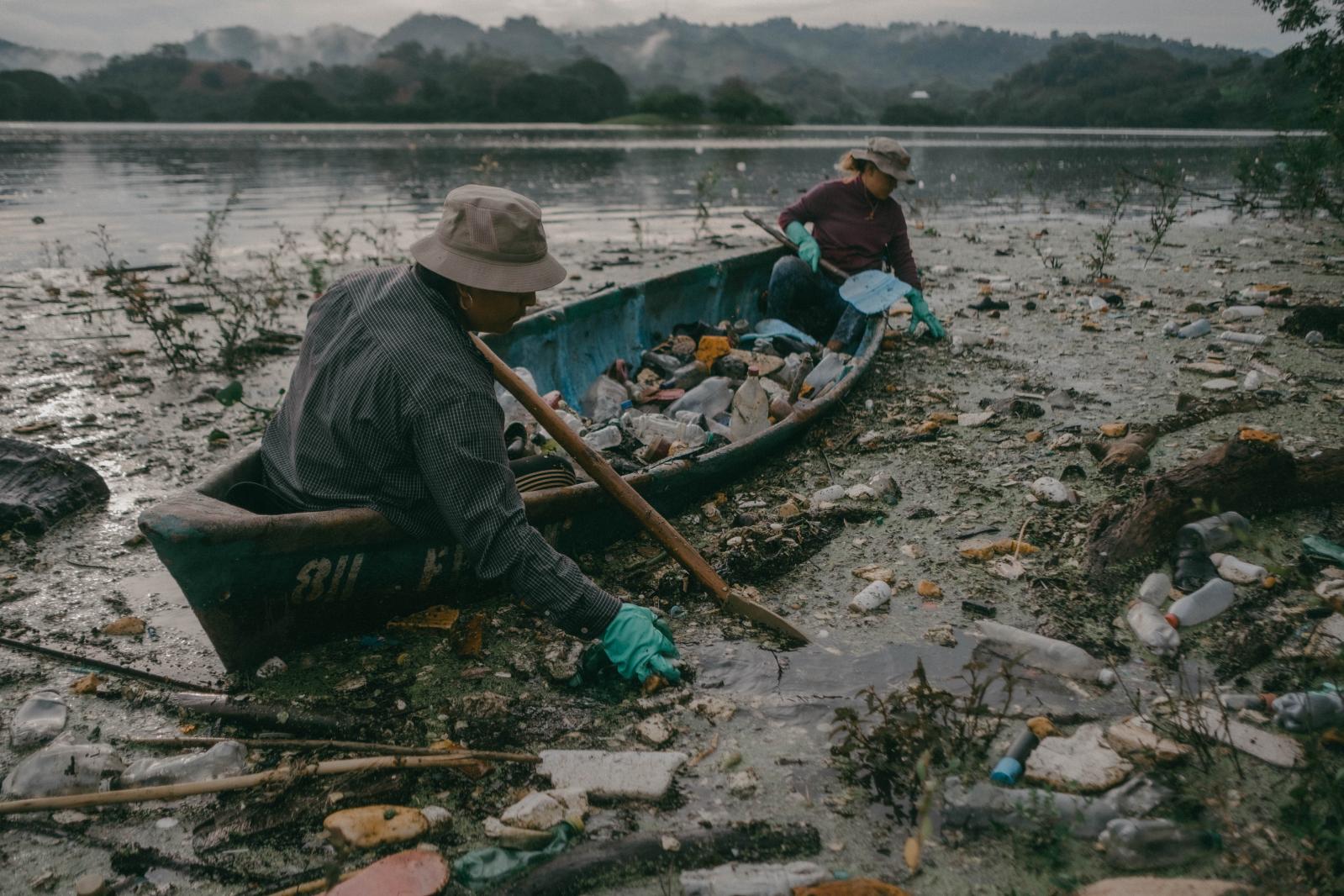Public Story
Fishing for garbage
In 2005, the Cerrón Grande reservoir was named a Ramsar site —as part of an international protocol to defend and protect the world’s wetlands— because of its biodiversity and importance as a source of life and work for the surrounding populations. Nevertheless, photographs of this part of Cerrón Grande show birds paddling through floating islands of garbage.
According to data from the Ministry of the Environment, El Salvador generates 4,226 tons of waste each day. 80 percent of that garbage ends up in sanitary landfills, while the rest is not disposed of correctly. In other words, nearly 845 tons of waste end up polluting the country's rivers, lakes, and beaches.
At the beginning of 2022, the extinction of the water hyacinth, an invasive plant that used to cover the surface of the reservoir’s shores, exposed the amount of mostly plastic waste, as river currents swept garbage to the Cerrón Grande reservoir (also known as Lake Suchitlán) in the department of Chalatenango. For residents who are used to seeing waste arrive every year, that was nothing new. But as the weeks went by, they saw that the amount of garbage had increased to the point that it precluded artisanal fishing, one of the jobs that generates the most income for local families.
According to community leaders, at the end of August of this year, Potonico’s situation became untenable. Even the region’s cattle ranchers had to start removing garbage as their cows and horses became sick from ingesting pieces of plastic after drinking water from the Lempa River. Spearfishermen had to stop harpooning because of the water’s poor visibility, and everyone in the municipality was aware of the massive amounts of waste on the shores of the reservoir. Since then, community leaders have formed a cooperative of ranchers and farmers called Piedra del Idioma, which works Monday through Friday from 5:00 a.m. to noon to try to clean up the trash.










